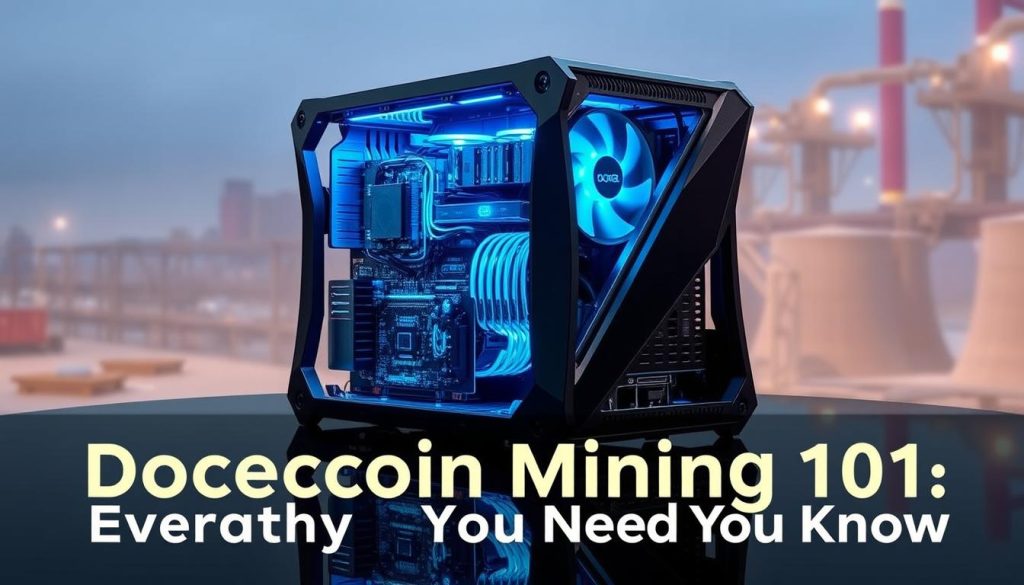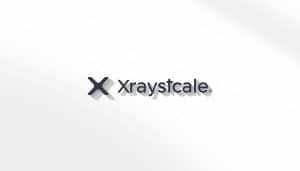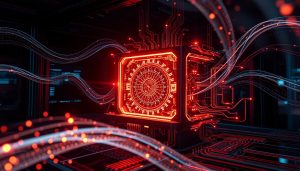Did you know that Dogecoin’s price recently dipped below a critical support level, hovering around $0.25? This unexpected shift has sparked renewed interest in understanding how its ecosystem works, especially for those curious about mining. When I first started exploring crypto, I had no idea how complex and rewarding it could be. What began as a simple hobby quickly turned into a deep dive into blockchain technology and the tools that power it.
One of the most significant changes I’ve witnessed is the evolution of mining hardware. Early on, GPUs were the go-to choice, but now, ASIC miners dominate the scene. These specialized devices are faster, more efficient, and have reshaped the way we approach crypto operations. If you’re new to this, don’t worry—this guide will walk you through everything, from the basics to advanced strategies.
In this article, you’ll find step-by-step instructions, statistical insights, and tips to maximize profitability. Whether you’re a seasoned miner or just starting, this guide is designed to help you navigate the ever-changing world of crypto with confidence.
Key Takeaways
- Dogecoin’s price movement is influenced by key support and resistance levels1.
- ASIC miners have revolutionized the efficiency of crypto operations.
- Understanding mining is essential for participating in blockchain security.
- This guide includes practical steps and profitability insights.
- Specialized hardware like ASIC miners is now the industry standard.
Introduction to Dogecoin Mining
The world of crypto has seen dramatic shifts, especially in how transactions are verified. At the heart of this process lies the concept of proof-of-work, a system that relies on computational power to validate transactions and secure the network. This is where mining comes into play.
What Is Dogecoin Mining?
Mining is the process of using computer power to solve complex mathematical problems. When a problem is solved, a new block of transactions is added to the blockchain. Miners are rewarded for their work with crypto tokens. In the early days, this could be done with a standard PC, but as difficulty increased, more advanced hardware became necessary.
The Evolution of Mining in the Dogecoin Era
As the crypto ecosystem grew, so did the challenges. Early miners relied on individual computers, but this quickly became inefficient. The introduction of ASIC (Application-Specific Integrated Circuit) hardware changed the game. These devices are designed specifically for mining, offering unmatched speed and efficiency.
Another significant shift was the rise of mining pools. Instead of working alone, miners began combining their resources to increase their chances of solving a block. This not only improved profitability but also made mining accessible to more people. However, it’s essential to choose a reputable pool, as scams like Hashflare’s $577 million Ponzi scheme have shown the risks involved2.
- Mining validates transactions and secures the network.
- ASIC hardware revolutionized efficiency in crypto operations.
- Joining a pool increases chances of earning rewards.
Understanding Dogecoin Mining
The process of validating transactions in crypto relies heavily on computational power and time. This is the foundation of the proof-of-work system, which ensures the blockchain remains secure and functional. Without this mechanism, the entire network would be vulnerable to attacks and inefficiencies.
Overview of the Proof-of-Work Process
Proof-of-work involves solving complex mathematical problems to validate transactions. Each solved problem adds a new block to the blockchain. This process requires significant computational resources, making hardware setup crucial. For example, ASIC devices are designed to handle these tasks efficiently, reducing the time needed to solve problems1.
However, this system isn’t without challenges. High power consumption and increasing network difficulty can make it harder for individual miners to succeed. That’s why many join pools, combining their resources to improve their chances of earning rewards.
Role of Miners and the Network Dynamics
Miners play a vital role in maintaining the blockchain’s integrity. They validate transactions and secure the network, ensuring that all operations run smoothly. Without miners, the system would collapse.
To participate, you’ll need the right hardware and a secure wallet to store your earnings. Setting up your system correctly is essential for maximizing efficiency and profitability. For instance, using a reliable exchange like Binance can simplify the process of transferring your rewards to your wallet.
| Block Production Time | Network Difficulty | Hardware Efficiency |
|---|---|---|
| 1 minute | High | ASIC devices |
| 5 minutes | Medium | GPUs |
| 10 minutes | Low | Standard PCs |
From my experience, balancing power consumption with hardware capabilities is key. Overloading your system can lead to inefficiencies, while underutilizing it reduces your chances of earning rewards. Always monitor your setup and adjust as needed.
Essential Hardware & Software Tools
Selecting the right tools for crypto operations can make or break your success. Whether you’re a beginner or an experienced enthusiast, understanding the differences between ASIC and GPU options is crucial. From my experience, the right device can significantly impact your efficiency and profitability.
Choosing Between ASIC and GPU Options
When it comes to hardware, ASIC devices are designed for specific tasks, offering unmatched speed and efficiency. For example, Bitmain controls approximately 80% of the ASIC market for bitcoin hardware3. These devices are ideal for large-scale operations but come with higher upfront costs.
On the other hand, GPUs are more versatile and affordable. They can handle a variety of tasks, making them a popular choice for smaller setups. However, they consume more power and may not be as efficient as ASICs. From my experience, balancing cost and performance is key to choosing the right device.
Mining Software and Configuration Essentials
Once you’ve selected your hardware, the next step is choosing the right software. Popular options like CGminer and EasyMiner offer user-friendly interfaces and advanced features. These tools help you configure your setup, monitor performance, and optimize efficiency.
Configuration is critical to maximizing your returns. For instance, proper cooling and power management can extend the lifespan of your device. Additionally, understanding fee structures and network requirements can help you avoid unnecessary costs4.
| Hardware Type | Pros | Cons |
|---|---|---|
| ASIC | High efficiency, fast processing | Expensive, limited versatility |
| GPU | Affordable, versatile | Higher power consumption |
From my experience, investing in the right tools and understanding their configuration can significantly impact your success. Whether you choose an ASIC or a GPU, always prioritize efficiency and scalability.
Setting Up Your Mining Rig
Building a mining rig can feel overwhelming, but with the right steps, it’s easier than you think. From connecting hardware to configuring software, each step is crucial for maximizing efficiency and profitability. Let’s dive into the process and ensure your setup is ready to handle the demands of crypto operations.
Step-by-Step Configuration Guide
Start by connecting your ASIC or GPU hardware to a stable power source. Ensure proper cooling to prevent overheating, as this can significantly impact performance. Next, connect your device to your router using an Ethernet cable for a stable connection5.
Set a static IP address for your rig to avoid connectivity issues. This ensures your device remains accessible on the network. Once connected, download and install mining software like CGminer or EasyMiner. These tools simplify configuration and provide real-time performance monitoring.
Configure your software to align with your chosen crypto coin. If you’re considering merged mining, ensure compatibility with both Dogecoin and Litecoin. This option allows you to mine multiple coins simultaneously, increasing your earning potential6.
Safety and Efficiency Tips
Safety is paramount when setting up your rig. Use surge protectors to safeguard your hardware from power fluctuations. Additionally, invest in cost-effective power solutions to reduce operational costs. Proper electricity use not only saves money but also ensures a stable mining operation.
Regularly monitor your rig’s performance and troubleshoot common issues like connectivity drops or hardware malfunctions. Keeping your system in optimal condition ensures consistent earnings and extends the lifespan of your equipment.
By following these steps, you’ll have a fully functional mining rig ready to tackle the challenges of the crypto world. Whether you’re mining Dogecoin, Litecoin, or exploring other options, a well-configured setup is key to success.
Choosing the Right Mining Pool and Strategy
Deciding between solo and pool strategies can significantly impact your crypto earnings. Both approaches have their pros and cons, and understanding the conditions for each is crucial. From my experience, the setup you choose will determine your efficiency and profitability.
Comparing Solo Mining with Pool Advantages
Solo mining gives you full control over your rewards, but it requires a powerful cpu and a stable setup. The challenge is that solving blocks alone can take a long time, especially as network difficulty increases. For example, solo miners often face higher electricity costs and longer wait times for payouts7.
On the other hand, joining a pool combines your resources with others, increasing your chances of earning rewards. Pools distribute earnings based on your contribution, making it a more consistent way to earn. However, pool fees can eat into your profits, so it’s essential to evaluate fee structures carefully8.
Here’s a quick comparison:
- Solo Mining: Full rewards, high difficulty, requires advanced setup.
- Pool Mining: Shared rewards, lower difficulty, consistent payouts.
Optimal Conditions for Both Strategies
For solo mining, you’ll need a high-performance cpu and a reliable setup to handle the workload. Cooling and power management are critical to avoid overheating and inefficiencies. From my experience, solo mining works best for those with access to cheap electricity and advanced hardware.
Pool mining, on the other hand, is more accessible. Even with a basic setup, you can contribute to a pool and earn rewards. The key is to choose a reputable pool with low fees and a transparent payout system. For instance, pools like Slush Pool and F2Pool have proven track records and reasonable fee structures9.
Ultimately, the choice depends on your resources and goals. If you’re just starting, a pool might be the better way to go. For experienced miners with advanced setups, solo mining could offer higher rewards.
Optimizing Profitability with Graphs, Statistics, and Predictions
Tracking your performance with real-time data can transform your approach to crypto operations. By leveraging graphs, statistics, and prediction tools, you can make informed decisions that maximize your earnings. This section dives into how to interpret data, calculate profitability, and predict future trends.
Analyzing Mining Data Trends and Performance Graphs
Real-time graphs are essential for monitoring your setup. They provide insights into hash rates, power consumption, and earnings. For example, a sudden drop in hash rate could indicate hardware issues, while spikes in power usage might suggest inefficiencies10.
Performance dashboards in software like CGminer display these metrics clearly. By regularly reviewing this data, you can identify patterns and adjust your strategy accordingly. This proactive approach ensures your system runs at peak efficiency.
Calculating Profitability and Future Predictions
Profitability depends on several factors, including electricity costs and market prices. Online calculators can help you estimate earnings based on your hardware and local power rates. For instance, a validator with a 10% commission generates a net income of $103,651 annually10.
Future predictions rely on current trends in pricing and network difficulty. By analyzing historical data, you can anticipate changes and adapt your strategy. For example, if network difficulty increases, you might need to upgrade your hardware or join a pool to maintain profitability.
| Metric | Impact on Profitability | Action |
|---|---|---|
| Hash Rate | Higher rates increase earnings | Upgrade hardware |
| Power Consumption | Higher costs reduce profits | Optimize cooling |
| Market Price | Price drops lower earnings | Diversify assets |
From my experience, staying informed and adaptable is key to long-term success. Use tools like performance graphs and calculators to guide your decisions. By doing so, you’ll not only optimize your current setup but also prepare for future challenges.
FAQs and Case Studies
Q: How often should I review my performance data?
A: Daily reviews are ideal for catching issues early. Weekly summaries can help track long-term trends.
Q: What’s the best way to predict future profitability?
A: Combine historical data with current market trends. Tools like WhatToMine provide valuable insights.
Case studies from reputable pools like Slush Pool show how data-driven strategies can significantly boost earnings. For example, one user increased their profits by 20% after optimizing their setup based on performance graphs11.
Safety, Evidence, and Credible Sources
Ensuring safety and accuracy in crypto operations starts with reliable information and trusted tools. From my experience, cutting corners or relying on unverified sources can lead to costly mistakes. That’s why it’s crucial to validate every detail before diving in.
Validating Information and Relying on Trusted Sources
When it comes to mine dogecoin, the first step is to verify all information. Trusted platforms like CoinMarketCap and Dogepedia provide up-to-date data and technical guides. These resources are invaluable for understanding the nuances of scrypt algorithms and their impact on the doge ecosystem12.
Tools like cgminer play a vital role in ensuring secure practices. This software not only optimizes performance but also adheres to the highest safety standards. For instance, it monitors hash rates and power consumption, helping you avoid inefficiencies13.
Here are some trusted resources every miner should consult:
- CoinMarketCap for real-time market data.
- Dogepedia for detailed technical guides.
- Community forums for peer-reviewed feedback.
Role of Scrypt Algorithms and Verification Practices
The scrypt algorithm is at the heart of mine dogecoin operations. It ensures that transactions are secure and rewards are distributed fairly. Understanding how it works can help you optimize your setup and maximize your reward potential.
Verification practices are equally important. Always double-check hardware compatibility and software configurations. For example, using cgminer with a scrypt-based device ensures that your system runs efficiently and securely12.
Here’s a quick checklist for verification:
- Confirm hardware compatibility with scrypt algorithms.
- Test software configurations before full-scale operations.
- Monitor performance metrics regularly to catch issues early.
From my experience, adopting a cautious approach pays off. Use detailed statistics and credible feedback as your guiding tools. By doing so, you’ll not only ensure safety but also optimize your reward potential.
Advanced Tips and Emerging Trends
The crypto landscape is evolving rapidly, with new technologies reshaping how we approach operations. From my experience, staying ahead requires not just technical know-how but also a keen eye for emerging trends. Let’s dive into some advanced tips and innovations that can transform your setup.
Innovations Impacting Mining Efficiency
One of the most significant advancements is the rise of next-gen ASIC devices. These machines are designed to handle complex tasks with minimal power consumption, addressing the high cost of electricity. For example, newer models reduce the number of components needed, streamlining the entire operation14.
Another trend is the integration of AI-driven software. These tools analyze real-time data to optimize performance, ensuring maximum profitability. From my experience, using such software can cut down on manual adjustments and improve overall efficiency15.
- Upgrade to modular hardware setups to reduce maintenance cost.
- Use predictive analytics to anticipate network difficulty changes.
- Join a reputable pool to share resources and increase earnings.
Looking ahead, the industry is poised for even more breakthroughs. For instance, decentralized operation models are gaining traction, offering greater transparency and security. As these trends unfold, staying informed and adaptable will be key to maintaining profitability.
For more insights on how regulatory changes are shaping the crypto world, check out this detailed analysis.
Conclusion
Navigating the world of crypto operations can feel overwhelming, but with the right steps, it becomes manageable. This guide has walked you through everything from choosing the best mining software to optimizing your setup for maximum efficiency. Remember, monitoring your electricity usage is crucial for maintaining profitability16.
Take the time to review the charts, statistics, and FAQs included in this article. These resources are designed to deepen your understanding and help you make informed decisions. Staying updated with the latest trends ensures you’re always ahead of the curve.
Ready to take the next step? Start by setting up your account and exploring the tools discussed here. Your journey into crypto operations is just beginning, and with the right approach, the possibilities are endless.
























 Bitcoin
Bitcoin  Ethereum
Ethereum  Tether
Tether  XRP
XRP  USDC
USDC  Lido Staked Ether
Lido Staked Ether  TRON
TRON  Dogecoin
Dogecoin  Cardano
Cardano  Figure Heloc
Figure Heloc  WhiteBIT Coin
WhiteBIT Coin  Wrapped stETH
Wrapped stETH  Bitcoin Cash
Bitcoin Cash  Wrapped Bitcoin
Wrapped Bitcoin  USDS
USDS  Chainlink
Chainlink  Wrapped eETH
Wrapped eETH  Binance Bridged USDT (BNB Smart Chain)
Binance Bridged USDT (BNB Smart Chain)  LEO Token
LEO Token  WETH
WETH  Hyperliquid
Hyperliquid  Stellar
Stellar  Monero
Monero  Zcash
Zcash  Ethena USDe
Ethena USDe  Coinbase Wrapped BTC
Coinbase Wrapped BTC  Litecoin
Litecoin  Sui
Sui  Avalanche
Avalanche  Hedera
Hedera  Shiba Inu
Shiba Inu  sUSDS
sUSDS  USDT0
USDT0  Dai
Dai  Mantle
Mantle  PayPal USD
PayPal USD  Toncoin
Toncoin  World Liberty Financial
World Liberty Financial  Cronos
Cronos  Ethena Staked USDe
Ethena Staked USDe  Uniswap
Uniswap  Polkadot
Polkadot  MemeCore
MemeCore  Aave
Aave  Bittensor
Bittensor  USD1
USD1  Canton
Canton  Rain
Rain